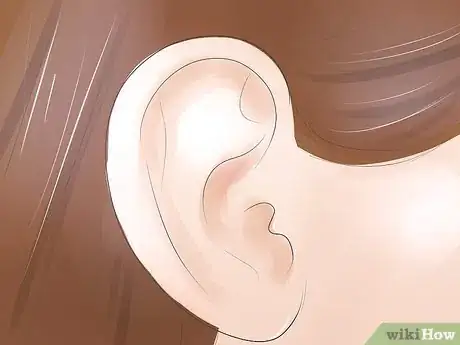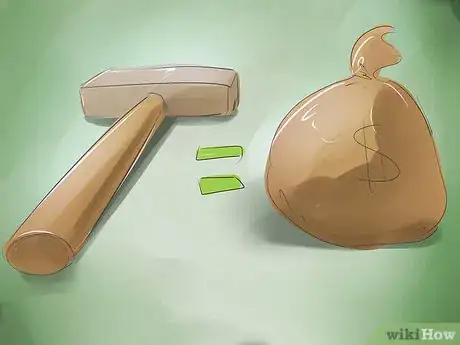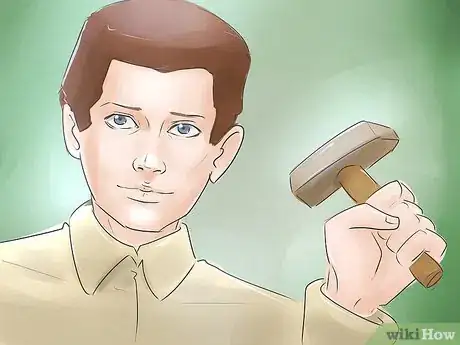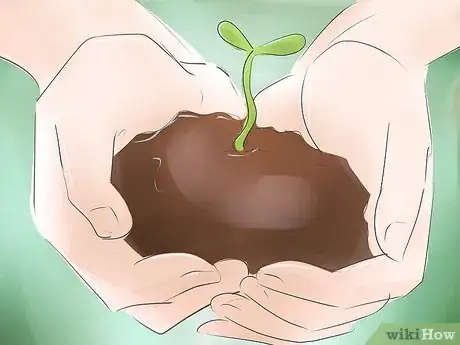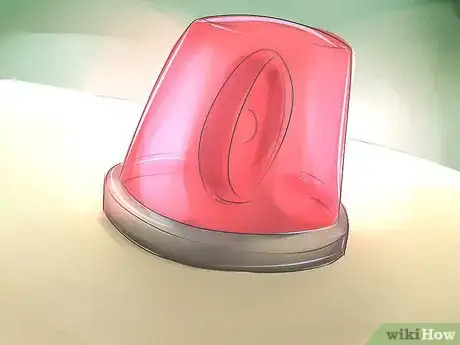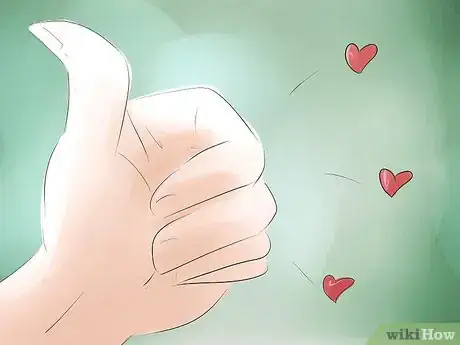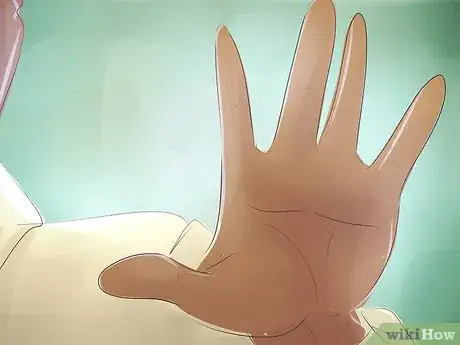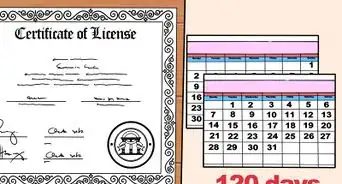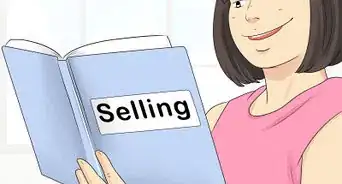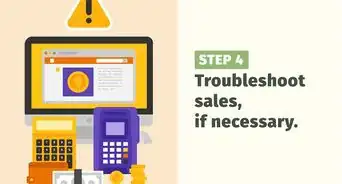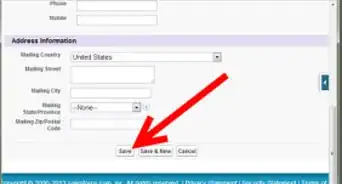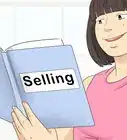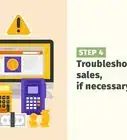This article was co-authored by Linda Chau. Linda Chau is a Public Relations Specialist and the CEO and Founder of PAAPR Agency (Public Attention And Public Relations). With over a decade of experience, she specializes in strategic planning, brand storytelling, press communication, and reputation management. Linda holds a BA from The University of California, Riverside and has been featured in AdAge, Austin Business Journal, and more.
There are 15 references cited in this article, which can be found at the bottom of the page.
wikiHow marks an article as reader-approved once it receives enough positive feedback. This article received 11 testimonials and 100% of readers who voted found it helpful, earning it our reader-approved status.
This article has been viewed 442,907 times.
The ability to sell someone something - whether it's a product, a service, or an idea - is the fundamental skill at the core of many, many jobs in the business world (especially ones with commission-based pay). When it comes to closing a sale, it's not all about smooth-talking your buyer. It's just as important to be able to listen intently, think critically, and to intelligently apply effective sales techniques. By doing these things, not only will your personal sales increase - your business's will as well.
Steps
Interacting With a Customer
-
1Satisfy your customers. Above all else, try to keep your customer happy and satisfied. Humans aren't perfectly logical creatures - if someone likes you, they're more likely to buy from you, regardless of the deal you're offering. Be friendly, charming, and open with your customer. Give her peace of mind. Whatever your customer is looking for, that's what you should try to provide.[1]
- This applies both to your conduct and to the thing being sold. Not only should you be a customer's friend up to (and after) the point of the sale, you should do your best to convince the customer that whatever you're selling will give him exactly what he wants - that it will solve his problem, save him money in the long run, etc.[2]
-
2Listen. It's pretty difficult to satisfy a customer if you don't know what she wants - luckily, most of the time, all you'll have to do to figure this out is to simply listen. This isn't hard - at the beginning of your pitch, ask a customer what you can help with and let the customer describe her problem or desire. Once you know what she wants, you'll be able to decide which products, services, etc. best meet her needs.
- Don't just listen to what a customer says - try to pay attention to how she says it in terms of facial expressions, body language, etc. If, for instance, a customer seems impatient or tense, you'll know that you can probably satisfy him by offering him a quick, easy solution to his problem, rather than giving him a lengthy sales pitch for your whole range of products.[3]
Advertisement -
3Give your full attention.[4] When a customer is considering making a purchase, you want to give the impression that you're available to fulfill any needs or answer any questions that may arise. You don't want to give the impression that you're distracted or that you're attending to your customer as an afterthought. Whenever possible, interact with customers on a personal, one-to-one basis, returning to your other duties only when the job is done.
- This being said, try not to be an annoyance to customers. When you've gotten a sale, you can back off somewhat and allow your customer some breathing room. For instance, you might say something like, "Great, I think you'll be happy with this purchase. I'll meet you at the register when you're ready!"
- Customer service is key to starting a successful business.
-
4Demonstrate your product/service's value. When it comes to convincing a reluctant customer to make a purchase, flowery, glowing praise for your product or service is only going to get you so far. To really get the customer on your side, show your customer how the thing you're selling will make their life better. Whether it will save them money and time, give them peace of mind, or simply make them feel good, make sure your customer understands exactly how the item you're selling benefits him in real, practical terms.[5]
- This is a common sales tactic. For instance, car dealers let customers go on test drives and guitar salesmen let customers play on their instruments - even department stores let customers try clothes on before they buy them. If the thing you're selling is intangible or something you can't let customers touch before buying, think of another way to show customers its value. For instance, if you're selling solar panels, you might help customers estimate the savings they'll have on their electricity bill.
- An old saying goes, "Sell the benefit, not the product." Focus on what your product or service allows your customer to do, rather than on the product itself.[6]
-
5Know your field. Customers like buying from salespeople who seem knowledgeable without being condescending. Be a friendly resource for your customer. Ideally, not only should you know the products and/or services you're selling like the back of your hand, but also those of your competitors. If you know this information, you'll be able to make comparisons that cast your product or service in the best light possible and your competitors' in a less favorable light. You'll also be able to intuitively recommend certain products based on your customer's unique situation.[7]
- For example, if you're selling televisions and you're approached by a single father wrestling to control 3 unruly children, you might want to use your knowledge of your products to recognize that a certain model has extensive parental control options and to use this information as a selling point.
-
6Close.[8] It's relatively easy to get a customer to like a product, but your commission ultimately depend on whether your customers buy your products, which is another matter entirely. Try to get a commitment from customers the same day you first meet them - a customer that leaves the store to "think about it" might not come back. If a customer is reluctant to make a purchase immediately, try to sweeten the deal - offer a minor discount or "throw in" extra bonuses in exchange for a customer's commitment.[9]
- Additionally, try to streamline the purchasing process so that it can be completed with a minimum of hassle. Accept multiple methods of payment, offer options for enrolling in an installment plan, and keep paperwork to a minimum. Not only will this make your customer's overall experience more positive, but it will also reduce the likelihood that customers will get cold feet before completing the process.
-
7Build relationships with your customers. Customers that feel that they've been respected and satisfied by a business are likely to give it a good review to their friends and may even return for future purchases. Building happy, respectful relationships with customers is a great way to give yourself a long-term sales boost. Try to genuinely connect with customers - when all's said and done, even if it can be tempting to think of customers as nothing more than numbers on a balance sheet, remember that these are real people with real emotions and that nearly all of them appreciate human warmth.[10]
- After making a major sale, consider sending a quick note or making a phone call to make sure your customer's enjoying his or her purchase. This can give the impression of a friendly, personal relationship. However, don't overdo it - most customers will eventually want to be left alone.
Using Sales Techniques
-
1Create the impression of urgency. Most customers, whether they're conscious of it or not, hate the idea of missing out on a good deal. Giving the impression that, by passing on a sale, your customer is missing a special offer or a limited-time deal is one of the oldest, most effective tricks in the book for getting reluctant customers off the fence. To do this, try to call attention to certain deals that won't be offered forever or certain products that are almost out of stock and encourage customers to "jump" on these opportunities.[11]
- Some business even take this to a borderline-unethical extreme, increasing a product's price so that a big, appealing, limited-time deal reduces its price to normal levels. This sort of trickery is unfortunate, but, sadly, common.
-
2Flatter shamelessly (but subtly). The stereotype of the salesperson as a slimy flatterer isn't entirely unearned - by playing to a customer's ego, you can increase your chance for success on almost any given sale. The trick here is to genuinely flatter your customer without seeming transparent, cloying, or phony. Pour on the honey, but don't overdo it: when your customer takes your exclusive deal on a new car, she's smart, not an absolute genius. When a heavy customer tries on a suit, he looks slim, not astoundingly dashing. Flatter, but be reasonable and realistic.
- When in doubt, it's hard to go wrong by complimenting a customer's taste at having picked a certain product. A simple "great choice!" or "ooh, nice!" can work wonders.
-
3Make customers feel obligated. Most people are more likely to do things for others when the other person has already done them a favor. Particularly sly salespeople can take advantage of this fact by giving the customer the impression that they've received some favor or act of kindness. Sometimes, being attentive and responsive to a customer is enough - for instance, a shoe salesman who tirelessly runs back and forth from the storeroom so that a customer can try on a dozen pairs of shoes has demonstrated serious kindness simply by doing his job well. Other times, small "actual" favors are necessary, like getting a customer a drink or clearing time out of your schedule for an appointment.[12]
- For best results, make sure your efforts are noticed. For instance, if you have to schedule an appointment with your customer, pull out a schedule book and visibly cross out another appointment when you write theirs down.
-
4Don't rush a sale. It's tempting, especially if your commission is on the line, to pressure a reluctant customer into a sale, rush him to the cash register, push him out the door, and forget about him. Obviously, this isn't a smart way to make sales. Customers don't like the idea that they're being tricked or swindled, so sales tactics that rely too heavily on making fast, high-pressure pitches can build hostility. Even if these tactics result in short-term sales gains, negative word-of-mouth can cause long-term downturns and tarnish your image.[13]
- The smartest salespeople present convincing pitches to the customer, then let the customer decide to buy the product, rather than pushing them to do it. While good salespeople do everything in their power to play up their product's benefits and minimize its downsides, they never attempt to actually make the decision for the customer.
-
5Be responsible and reliable. Other, slier sales techniques have their place, but if you do nothing else as a salesperson, try your best to have personal integrity.[14] When you make a promise to a customer, deliver on it. When you make a mistake, offer a sincere apology. Respect is at the center of any sales transaction. Customers want to respect a salesperson enough to be confident they won't be swindled, salespeople want to respect customers enough to assume they'll get a good review for their hard work, and businesses want to respect customers enough to assume they'll be paid for goods or services rendered. When one of these respect-based relationships breaks down, sales suffer, so do your part and earn your customers' respect by being a respectable human being.[15]
Community Q&A
-
QuestionHow do I go extra mile in delivering an awesome experience in retail?
 Community AnswerListen carefully to your customers. Suggest products that will work for their specific needs.
Community AnswerListen carefully to your customers. Suggest products that will work for their specific needs. -
QuestionHow can I increase sales in my kids toy shop?
 Community AnswerIt is always important to advertise. If people don't know about your business, no one will shop there. Also, as crazy as it sounds, ask kids what they like. Having what is popular and trending at the time will bring in a lot of customers who want to spend money.
Community AnswerIt is always important to advertise. If people don't know about your business, no one will shop there. Also, as crazy as it sounds, ask kids what they like. Having what is popular and trending at the time will bring in a lot of customers who want to spend money. -
QuestionHow to increase sales in fruits and vegetables business?
 Community AnswerUpsell. If someone is buying lettuce, recommend other salad ingredients, too.
Community AnswerUpsell. If someone is buying lettuce, recommend other salad ingredients, too.
Expert Interview
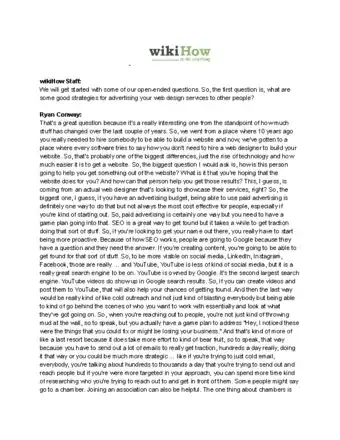
Thanks for reading our article! If you'd like to learn more about improving sales, check out our in-depth interview with Ryan Conway.
References
- ↑ https://neilpatel.com/blog/10-ways-to-make-customers-fall-in-love-with-your-business/
- ↑ https://www.inc.com/vanessa-merit-nornberg/3-secrets-to-satisfying-your-customers.html
- ↑ https://hbr.org/2011/12/know-what-your-customers-want-before-they-do
- ↑ https://www.mindful.org/how-to-give-your-full-attention/
- ↑ https://www.youtube.com/watch?v=NHSyfvV4ii4
- ↑ https://www.smartpassiveincome.com/benefits-sell-features-dont-and-here-is-why/
- ↑ https://www.business.qld.gov.au/running-business/marketing-sales/sales/skills/know-product
- ↑ https://www.inc.com/geoffrey-james/5-ways-to-close-a-deal.html
- ↑ https://www.inc.com/adam-heitzman/6-effective-sales-strategies-to-close-deals-faster.html
- ↑ https://www.entrepreneur.com/article/282364
- ↑ https://www.forbes.com/sites/ianaltman/2016/02/16/can-you-create-urgency-with-business-customers/#45bbdeb45a1e
- ↑ https://www.inc.com/geoffrey-james/6-ways-to-get-customers-to-yes.html
- ↑ https://blog.hubspot.com/sales/sales-closing-mistakes
- ↑ https://www.success.com/9-tips-to-help-you-strengthen-your-integrity/
- ↑ https://www.entrepreneur.com/article/254761
About This Article
The best way to improve your sales is to use techniques, like creating a sense of urgency and obligation in your customers, that make customers more likely to purchase your product or service. Demonstrate the value of what you are selling and show the customer that you know your field well. For tips on how to improve your interactions with customers in order to increase sales, read on!

